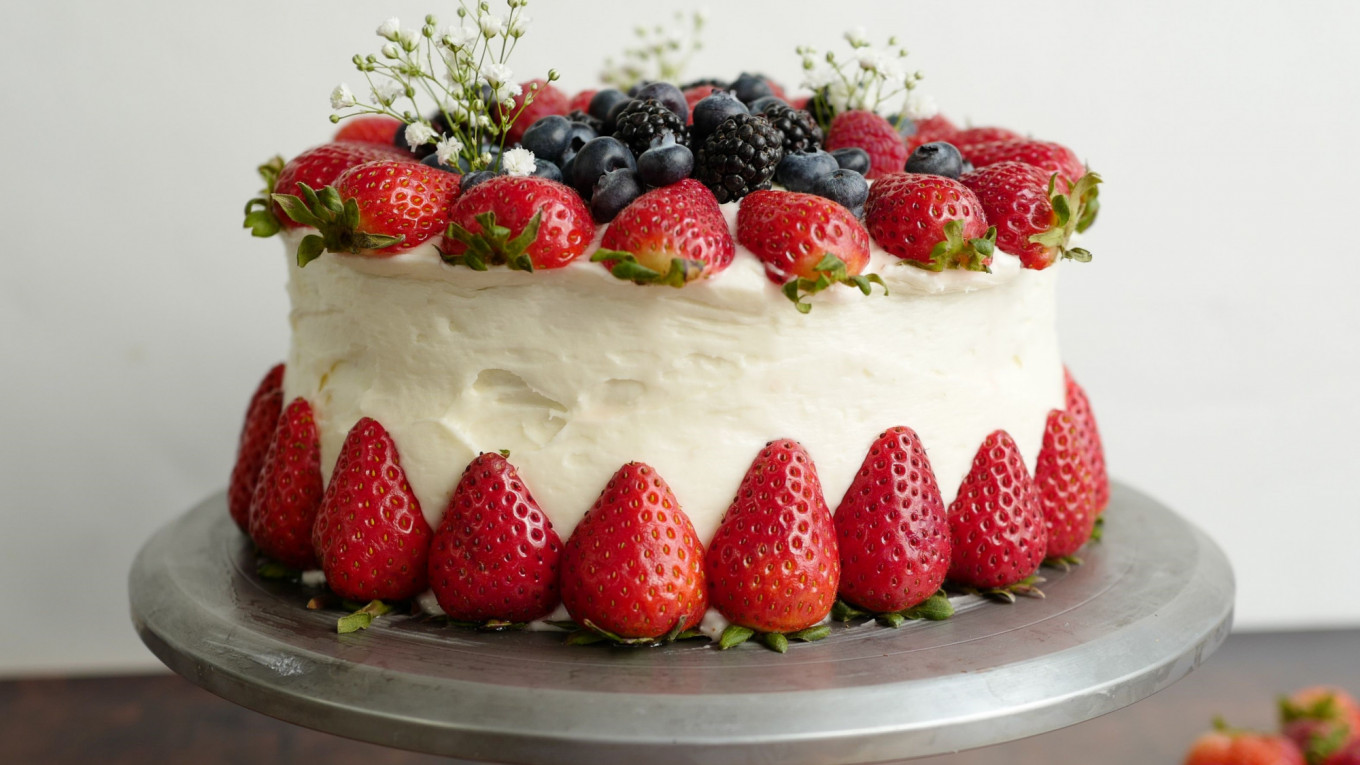One of life’s great indulgences is a mid-afternoon tea break. At 4:00 each afternoon, my phone trills the high-pitched, reedy “Tea” melody from “The Nutcracker,” signaling that it is time for a cup of tea and perhaps a slice of something sweet. During lockdown, my family members have folded this habit into the rhythms of their own days, and, more often than not, someone is already in the kitchen, the kettle hissing on the stove, and the “something sweet,” sits on the counter, ready to be portioned out. This time of year, the sweet something is invariably the remains of a tart, galette, or cake featuring whichever berries are in season. Cake and berries are a match made in heaven, and when you add in Russia’s “white gold” or sour cream, you have a troika of sweet, tangy, and tart flavors all pulling in the same direction.
Outside of Eastern Europe, sour cream is regarded as more of a condiment than an ingredient: slathered on baked potatoes, swirled into chili to cut its spicy bite, or tucked into crunchy tacos. In Eastern Europe, this is also true: no bowl of soup is deemed ready for consumption without the obligatory dollop of sour cream. But good sour cream is also the lynchpin of many classic Russian recipes: think beef Stroganoff, which gets its signature glossy sheen and rich undertones from sour cream, or mushroom julien, which pairs two epic Russian ingredients in an iconic creamy, umami hot appetizer, popular with theater-goers. But where thick, rich Russian sour cream really shines is in desserts. In medovik, Russia’s beloved ten-layer honey cake, sour cream provides the base flavor, as it does with today’s recipe, smetannik, or sour cream cake.
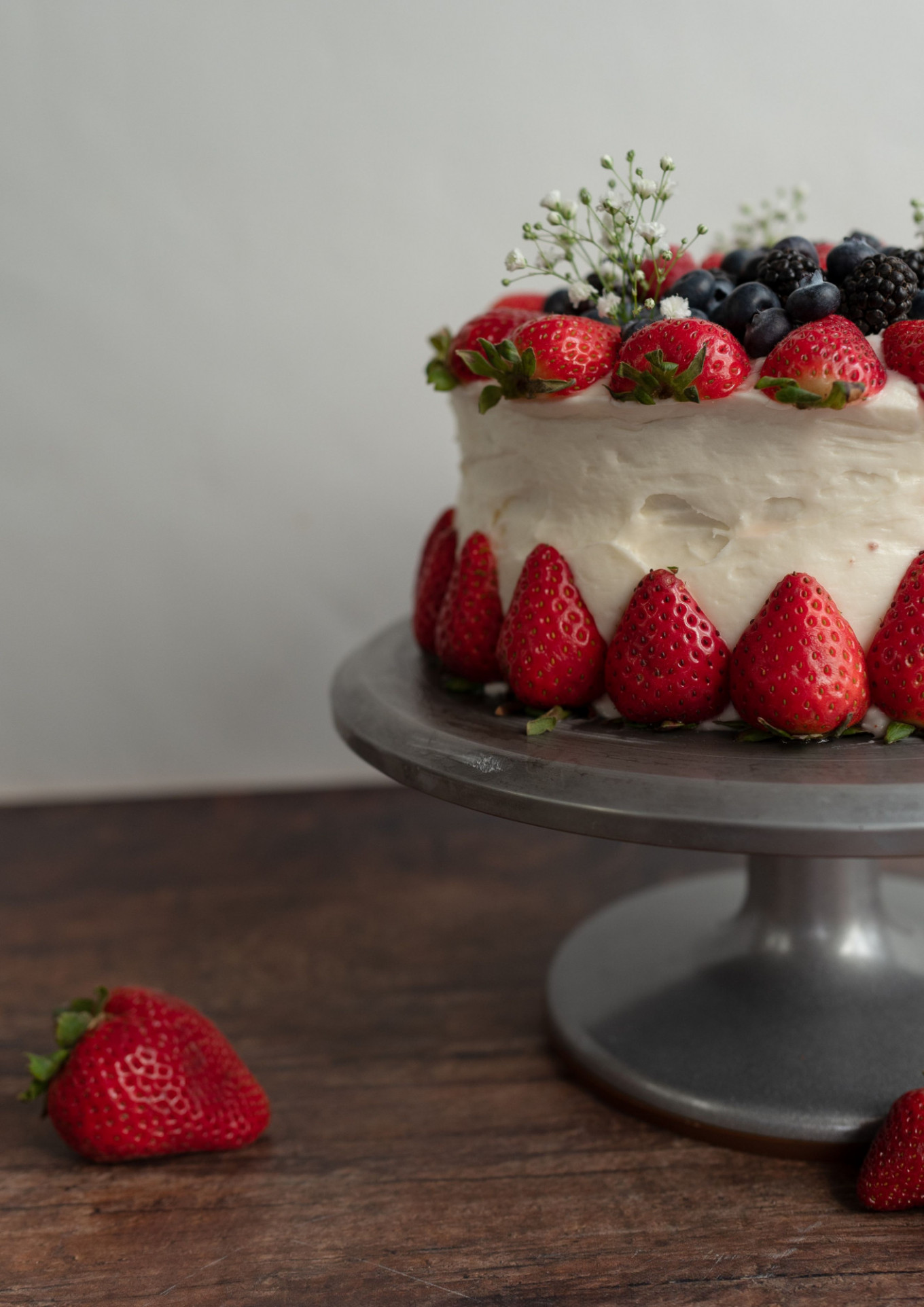
I came to food writing as a very nervous and untried baker, and for a long time, cakes such as smetannik were about as far as I ventured. There is something very forgiving about this simple, but classic snack cake, which does not demand of its chef fussy culinary tour de forces such as genoise filling, tricky steps like whipping egg whites into stiff peaks, or the nail-biting exercise of babysitting an oven filled with meringues. Smetannik is easy to throw together — sure, one layer is chocolate and the other vanilla, but this is effortlessly achieved by adding cocoa powder to one half of the batter. You don’t really need a handheld or stand mixer to make smetannik, though having them makes it even easier to assemble. Smetannik is also an excellent cake on which to practice your frosting technique. Like many butter-based frostings, this version benefits from some time in the fridge between the “crumb coat” — that first layer of frosting used to prepare and smooth the surface — and added cream cheese makes this an easy frosting to handle. If you are looking to break into cake baking, look no further than this dependable, sturdy workaday cake, perfect for the after-school snack, the 4:00 pm tea break, or the unexpected guest (remember those?) who drops in mid-morning for a congenial coffee.
Although smetannik is often decorated with crushed walnuts, when they are in season, fresh berries provide the perfect foil to the cake’s dense texture and rich flavor, as well as the intense sweetness of the frosting, made slightly tangy by the sour cream. Adorned with berries, smetannik becomes a celebration of anything you like: the opening of berry season, frosting, making your own sour cream, or just the four o’clock tea break. Take your pick.
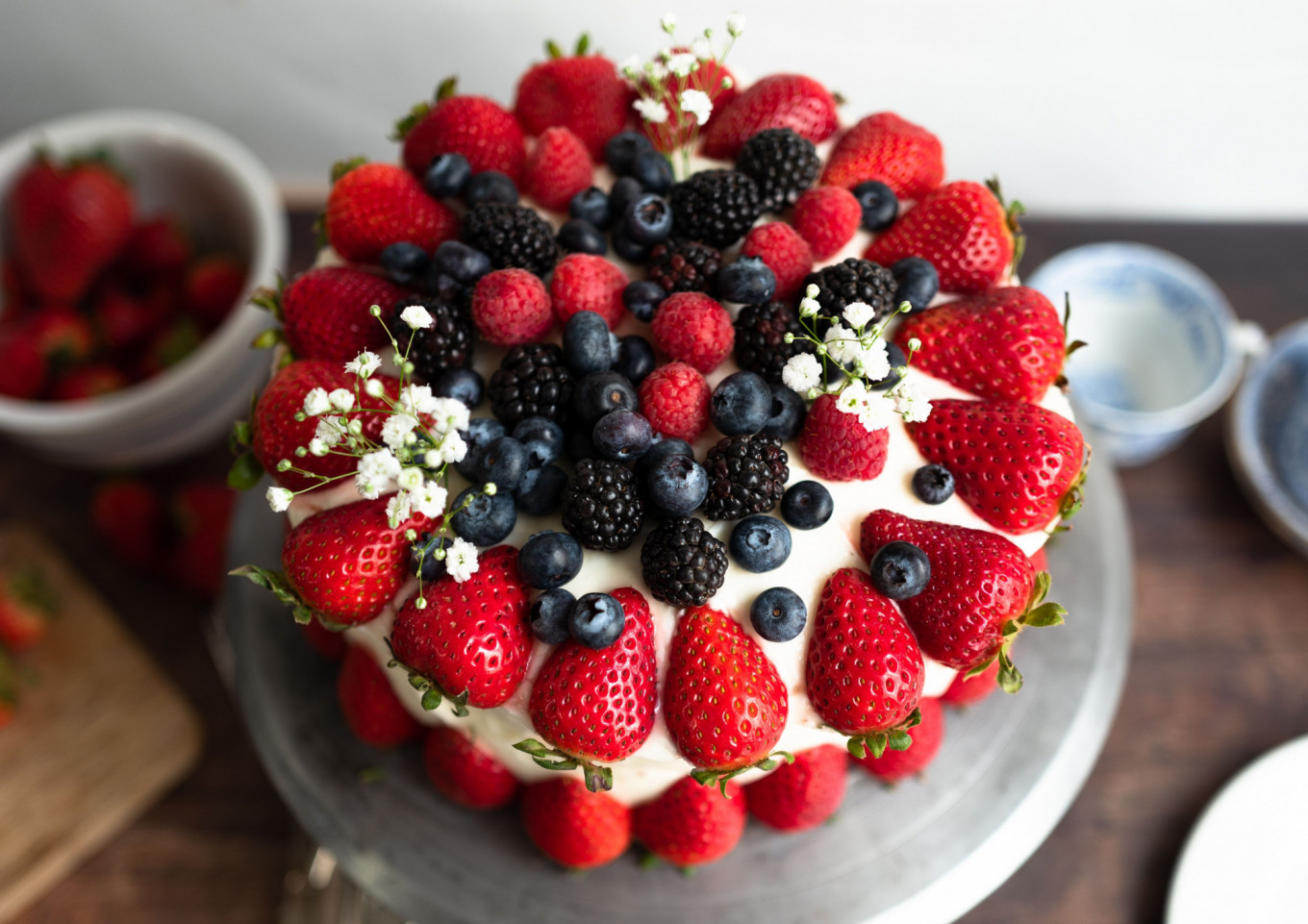
Smetannik
Ingredients
For the cake:
- 3 cups (425 grams) cake flour
- 1 ½ Tbsp baking powder
- 1 tsp salt
- 3/4-cup (177 ml) vegetable oil
- 1 Tbsp vanilla extract
- 2 large eggs, whisked together
- 1 ½ cups (300 grams) sugar
- 2 ½ cups (591 ml) sour cream
- ¼ cup (60 ml) cocoa powder (unsweetened)
- 1 Tbsp coffee extract or 3 Tbsp espresso coffee
- For the frosting:
- 1 ½ sticks (172 grams) butter, softened to room temperature
- 12 oz (340 grams) cream cheese, softened to room temperature
- ½ cup (120 ml) sour cream
- 1 ½ tsp vanilla extract
- 1 ½ tsp lemon extract
- 6 cups (750 grams) confectioners’ sugar
For garnish:
Fresh berries
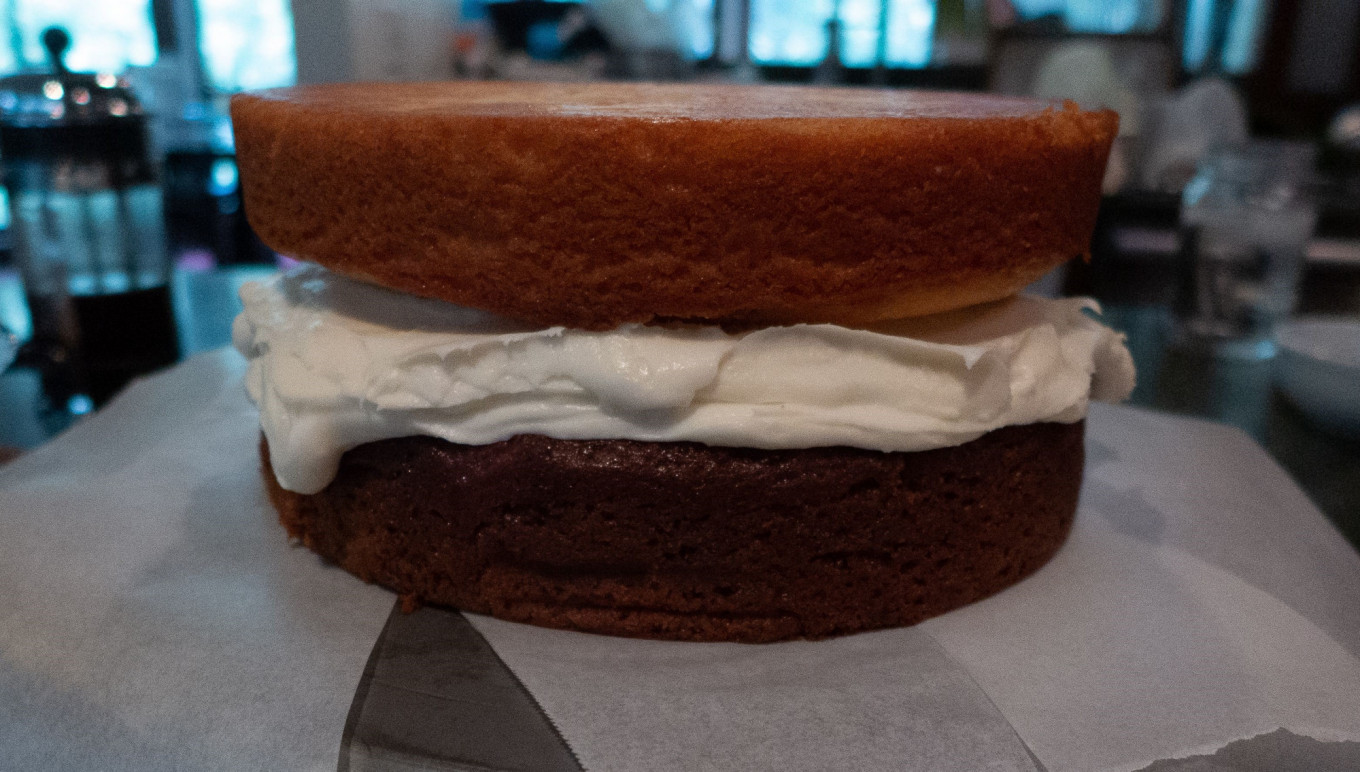
Instructions
- Preheat the oven to 350ºF (180ºC) and adjust rack to the middle position.
- Butter two 8-inch cake tins and line them with parchment paper, then butter the parchment paper.
- Whisk together the eggs, oil, vanilla, and sour cream in a large mixing bowl or a stand mixer fitted with the paddle attachment. Add the sugar to the mixture until just combined.
- Sift together the flour, salt, and baking powder, then add it in 3 batches to the wet ingredients until it forms a thick batter.
- Pour half of the batter into one prepared cake tin. Then add the cocoa powder and coffee extract to the remaining batter and stir until combined. Pour the remaining batter into the prepared cake tin.
- Bake the cakes for 40 minutes or until a toothpick tests clean. Cool the cakes in their tins for 15 minutes, then turn them out to a wire rack to cool completely.
- While the cake is cooling, make the frosting. For best results, make sure that the butter and cream cheese have both softened to room temperature.
- In the bowl of a stand mixer fitted with a paddle, beat the cream cheese and butter for 2-3 minutes on medium low speed until they are fully combined, smooth, and creamy. Add the vanilla and lemon extracts, then add the sugar in 1 cup increments, scraping down the sides of the mixer as you go. Add the sour cream at the end and beat until smooth. Chill the frosting for at least 30 minutes.
- To frost the cake, plant a dollop of frosting on the cake stand, then fix the bottom layer onto it. Then add a generous amount of frosting between the two layers. If you want to get very fancy, level both layers with a long, thin knife so that they are flat on both sides, or place the top layer upside down so that the top is completely flat. Apply an initial crumb coat, or thin layer of frosting on the top and sides of the cake to ensure the final coat goes on smoothly. Wipe the knife between applications to avoid getting any crumbs into the frosting. Chill the cake with its crumb coat for at least 30 minutes before applying the final frosting coat. Chill the final frosting coat for 30 minutes or more. Decorate with berries and/or edible flowers just before you are ready to serve.
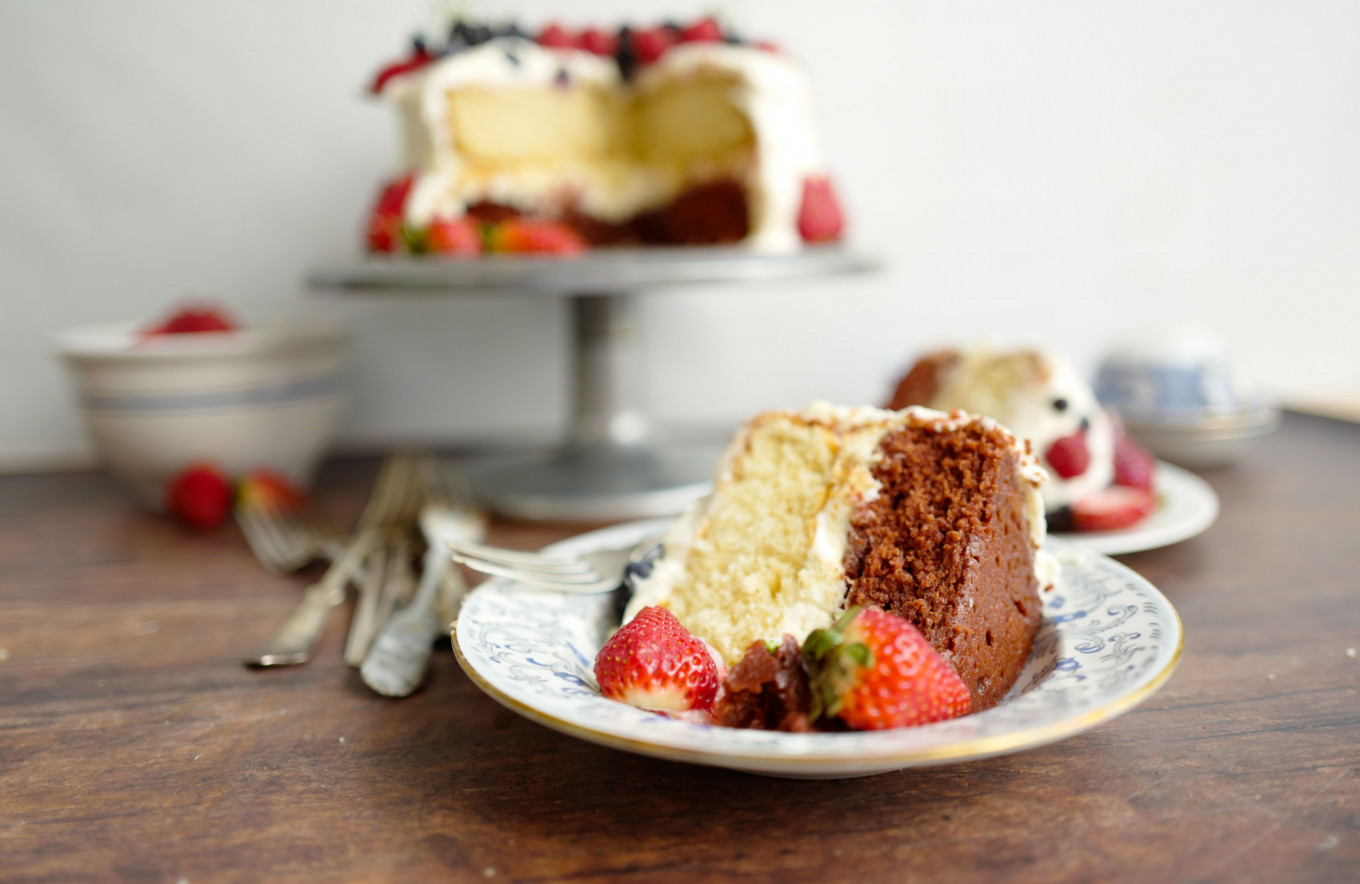
A Message from The Moscow Times:
Dear readers,
We are facing unprecedented challenges. Russia's Prosecutor General's Office has designated The Moscow Times as an "undesirable" organization, criminalizing our work and putting our staff at risk of prosecution. This follows our earlier unjust labeling as a "foreign agent."
These actions are direct attempts to silence independent journalism in Russia. The authorities claim our work "discredits the decisions of the Russian leadership." We see things differently: we strive to provide accurate, unbiased reporting on Russia.
We, the journalists of The Moscow Times, refuse to be silenced. But to continue our work, we need your help.
Your support, no matter how small, makes a world of difference. If you can, please support us monthly starting from just $2. It's quick to set up, and every contribution makes a significant impact.
By supporting The Moscow Times, you're defending open, independent journalism in the face of repression. Thank you for standing with us.
Remind me later.



